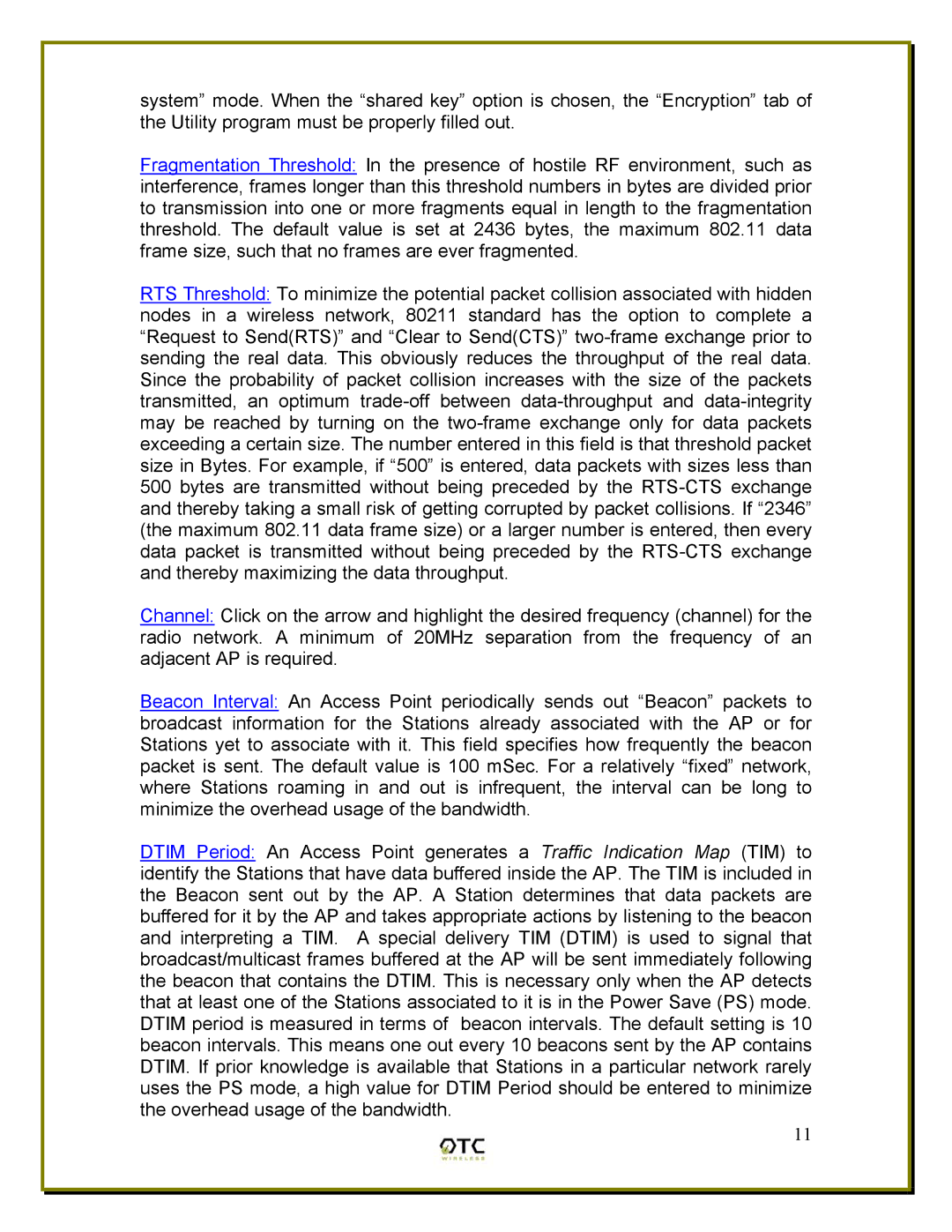
system” mode. When the “shared key” option is chosen, the “Encryption” tab of the Utility program must be properly filled out.
Fragmentation Threshold: In the presence of hostile RF environment, such as interference, frames longer than this threshold numbers in bytes are divided prior to transmission into one or more fragments equal in length to the fragmentation threshold. The default value is set at 2436 bytes, the maximum 802.11 data frame size, such that no frames are ever fragmented.
RTS Threshold: To minimize the potential packet collision associated with hidden nodes in a wireless network, 80211 standard has the option to complete a “Request to Send(RTS)” and “Clear to Send(CTS)”
Channel: Click on the arrow and highlight the desired frequency (channel) for the radio network. A minimum of 20MHz separation from the frequency of an adjacent AP is required.
Beacon Interval: An Access Point periodically sends out “Beacon” packets to broadcast information for the Stations already associated with the AP or for Stations yet to associate with it. This field specifies how frequently the beacon packet is sent. The default value is 100 mSec. For a relatively “fixed” network, where Stations roaming in and out is infrequent, the interval can be long to minimize the overhead usage of the bandwidth.
DTIM Period: An Access Point generates a Traffic Indication Map (TIM) to identify the Stations that have data buffered inside the AP. The TIM is included in the Beacon sent out by the AP. A Station determines that data packets are buffered for it by the AP and takes appropriate actions by listening to the beacon and interpreting a TIM. A special delivery TIM (DTIM) is used to signal that broadcast/multicast frames buffered at the AP will be sent immediately following the beacon that contains the DTIM. This is necessary only when the AP detects that at least one of the Stations associated to it is in the Power Save (PS) mode. DTIM period is measured in terms of beacon intervals. The default setting is 10 beacon intervals. This means one out every 10 beacons sent by the AP contains DTIM. If prior knowledge is available that Stations in a particular network rarely uses the PS mode, a high value for DTIM Period should be entered to minimize the overhead usage of the bandwidth.
11
